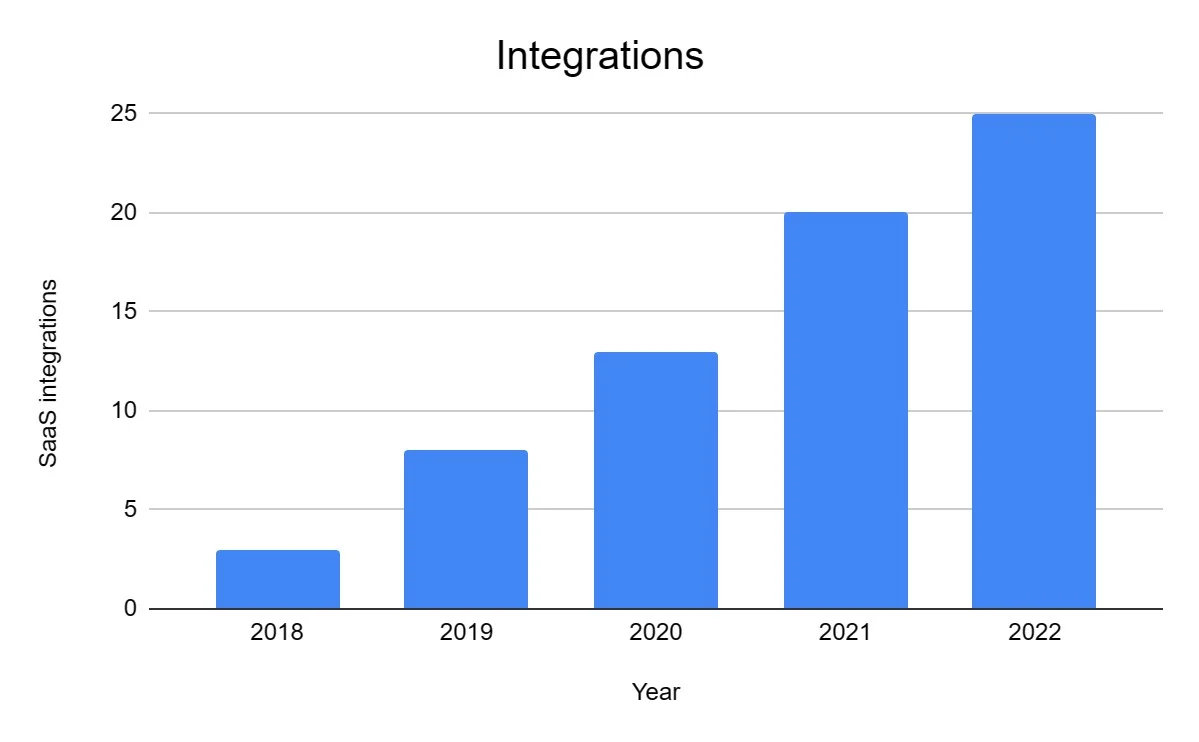Project Loom: Revolution in Java Concurrency or Obscure Implementation Detail?
The main goal of the project is to reduce the complexity of creating and maintaining the high-throughput concurrent applications. It introduces the concept of a lightweight concurrency model based on virtual threads. Virtual thread instead of being managed by the operating system as the standard one is scheduled by a Java virtual machine. It results in that such threads can be efficiently scheduled allowing synchronous code to be executed as well as asynchronous code in terms of performance.

And, of course, it can be heavily visual, allowing you to
interact with the database using diagrams, visually compose
queries, explore the data, generate random data, import data or
build HTML5 database reports. The way it does all of that is by using a design model, a
database-independent image of the schema, which can be shared in a
team using GIT and compared or deployed on to any database. This distro is specifically designed for running Java
apps.
Clean Energy Careers
The metadata in a wheelchair thread starts much faster than a platform thread and only uses as much stacked space as necessary for the active stack frames. A bigger problem, though, is the use of OS scheduler. Since the scheduler runs in kernel mode, there’s no differentiation between threads. And it treats every CPU request in the same manner. Project Loom is an attempt by the OpenJDK community to introduce a lightweight concurrency construct to Java.

Imagine being alerted to any regression or code smell as you’re
running and debugging locally. Also, identifying weak spots that
need attending to, based on integration testing results. A good way to go is, naturally, a dedicated profiler that
actually understands the ins and outs of MySQL.
REST with Spring
Connect and share knowledge within a single location that is structured and easy to search. Integration of Loom’s technology into Atlassian software such as collaboration tools Jira and Confluence will help users use video in their workflows. We are going to test the performance of the service which just proxies the request to one more service that replays with the expected 500ms delay. However, operating systems also allow you to put sockets into non-blocking mode, which return immediately when there is no data available. And then it’s your responsibility to check back again later, to find out if there is any new data to be read.
- I’m curious how the project will change the approach to concurrency in Java and its impact on popular libraries and frameworks.
- However, once a federal return is completed and filed, Direct File will guide taxpayers who want to file a state return to a state-supported tool that taxpayers can use to prepare and file a stand-alone state tax return.
- If you were ever exposed to Quasar, which brought lightweight threading to Java via bytecode manipulation, the same tech lead (Ron Pressler) heads up Loom for Oracle.
- When a green thread blocked, its carrier thread was also blocked, preventing all other green threads from making progress.
- Presently, Thread represents the core abstraction of concurrency in Java.
- In case of Project Loom, you don’t offload your work into a separate thread pool, because whenever you’re blocked your virtual thread has very little cost.
- I understand that Netty is more than just Reactive/Event Loop framework, it also has all the codecs for various protocols, which implementations will be useful somehow anyway, even afterwards.
As you can see, there was a fair amount of tweakability. We’ll have to see what comes back when this issue is revisited. For structured concurrency, it must be automatic to cancel all fibers in the scope when the scope times out or is forcibly closed. As the suspension of a continuation would also require it to be stored in a call stack so it can be resumed in the same order, it becomes a costly process. To cater to that, the project Loom also aims to add lightweight stack retrieval while resuming the continuation. Because the API is based on what we know (threads, executors), the learning curve is low.
Get started with Spring 5 and Spring Boot 2, through the Learn Spring course:
And now you can perform a single task on a single virtual thread. This example was based on analyzing the Thread.sleep() method, but also other blocking methods from different libraries were optimized for usage by virtual threads. The list of “virtual threads friendly” methods can be found here. In the case of IO-work (REST calls, database calls, queue, stream calls etc.) this will absolutely yield benefits, and at the same time illustrates why they won’t help at all with CPU-intensive work (or make matters worse).
At high levels of concurrency when there were more concurrent tasks than processor cores available, the virtual thread executor again showed increased performance. This was more noticeable in the tests using smaller response bodies. An unexpected result seen in the thread pool tests was that, more noticeably for the smaller response bodies, java virtual threads 2 concurrent users resulted in fewer average requests per second than a single user. Investigation identified that the additional delay occurred between the task being passed to the Executor and the Executor calling the task’s run() method. This difference reduced for 4 concurrent users and almost disappeared for 8 concurrent users.
How do virtual threads work?
A blocking read or write is a lot simpler to write than the equivalent Servlet asynchronous read or write – especially when error handling is considered. With Project Loom, you no longer consume the so-called stack space. The virtual threads that are not running at the moment, which is technically called pinned, so they are not pinned to a carrier thread, but they are suspended.

Because, after all, Project Loom will not magically scale your CPU so that it can perform more work. It’s just a different API, it’s just a different way of defining tasks that for most of the time are not doing much. They are sleeping blocked on a synchronization mechanism, or waiting on I/O. It’s just a different way of performing or developing software.
Massive Revamping of blocking code in JDK
For now, you can keep using thread locals, but you need to configure your thread factory if you use inheritable thread locals. Be aware of the memory impact if you launch vast numbers of virtual threads. After experimenting with separate classes for OS threads and virtual threads, they ended up deciding to use a single class for both—the familiar java.lang.Thread—in order to ease migration.
Since the OS implementation of continuations includes the native call stack along with Java’s call stack, it results in a heavy footprint. Before we discuss the various concepts of Loom, let’s discuss the current concurrency model in Java. Critically, it has very minimal impact on your server’s
performance, with most of the profiling work done separately – so
it needs no server changes, agents or separate services. If you were ever exposed to Quasar, which brought lightweight threading to Java via bytecode manipulation, the same tech lead (Ron Pressler) heads up Loom for Oracle.
Spring Boot Actuators: Customise Health Endpoint
There’s not much hardware to do the actual work, but it gets worse. Because if you have a virtual thread that just keeps using the CPU, it will never voluntarily suspend itself, because it never reaches a blocking operation like sleeping, locking, waiting for I/O, and so on. In that case, it’s actually possible that you will only have a handful of virtual threads that never allow any other virtual threads to run, because they just keep using the CPU. That’s the problem that’s already handled by platform threads or kernel threads because they do support preemption, so stopping a thread in some arbitrary moment in time. The second experiment compared the performance obtained using Servlet asynchronous I/O with a standard thread pool to the performance obtained using simple blocking I/O with a virtual thread based executor. The potential benefit of virtual threads here is simplicity.
Smart Cities Market size worth USD 1472.10 Billion, Globally, by … – PR Newswire UK
Smart Cities Market size worth USD 1472.10 Billion, Globally, by ….
Posted: Mon, 23 Oct 2023 14:30:00 GMT [source]

